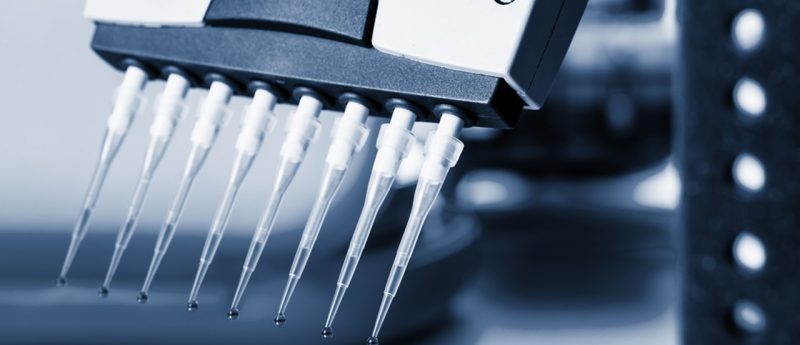Are diagnostics moving out of the microwell?

Scientists have relied on microwells to perform diagnostic assays for many years. This could be set to change thanks to a new approach developed by researchers at The Center for Research and Advanced Studies of the National Polytechnic Institute (Mexico) and the University of Florida (FL, USA) – the new technique, published recently in Analytical Chemistry, uses tiny, evaporating droplets suspended on ‘pillars’.
The analysis of samples of blood, DNA and other substances has long been carried out using the 96-well microplate. Indeed, due to the usefulness of these plates, automatic plate readers, pipettes and robots have all been designed to meet 96-well specifications.
More recently, however, plates have been designed with many more, and smaller, wells: up to 3456 on a plate. This is problematic as the tiny amount of liquid used in the wells can be difficult to mix and this is a key step in the reaction process. A novel way to deal with this problem has been designed by Jose L Garcia-Cordero (Center for Research and Advanced Studies) and colleagues.
Using plastic sheets of the same size as traditional plates and following the 96-well system, they dotted the sheets with 96 1 mm-tall pillar, rather than wells. Liquid solution droplets of approximately 10 μl were balanced on top of the pillars. Due to the phenomenon known as the Marangoni effect, as the drops evaporated, their contents mixed. The droplets also changed color indicating whether a particular reaction had taken place. The researchers are hopeful that the pillars could become a low-cost platform for medical diagnostics.
Sources: Hernandez-Perez R, Fan ZH, Garcia-Cordero JL. Evaporation-driven bioassays in suspended droplets. Anal. Chem. 88 (14), 7312–7317 (2016); www.acs.org/content/acs/en/pressroom/presspacs/2016/acs-presspac-july-20-2016/moving-diagnostics-out-of-the-microwell-video.html




